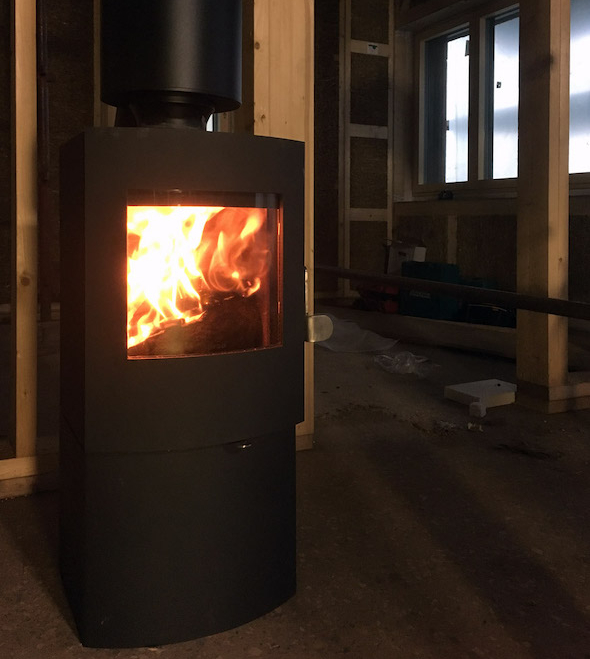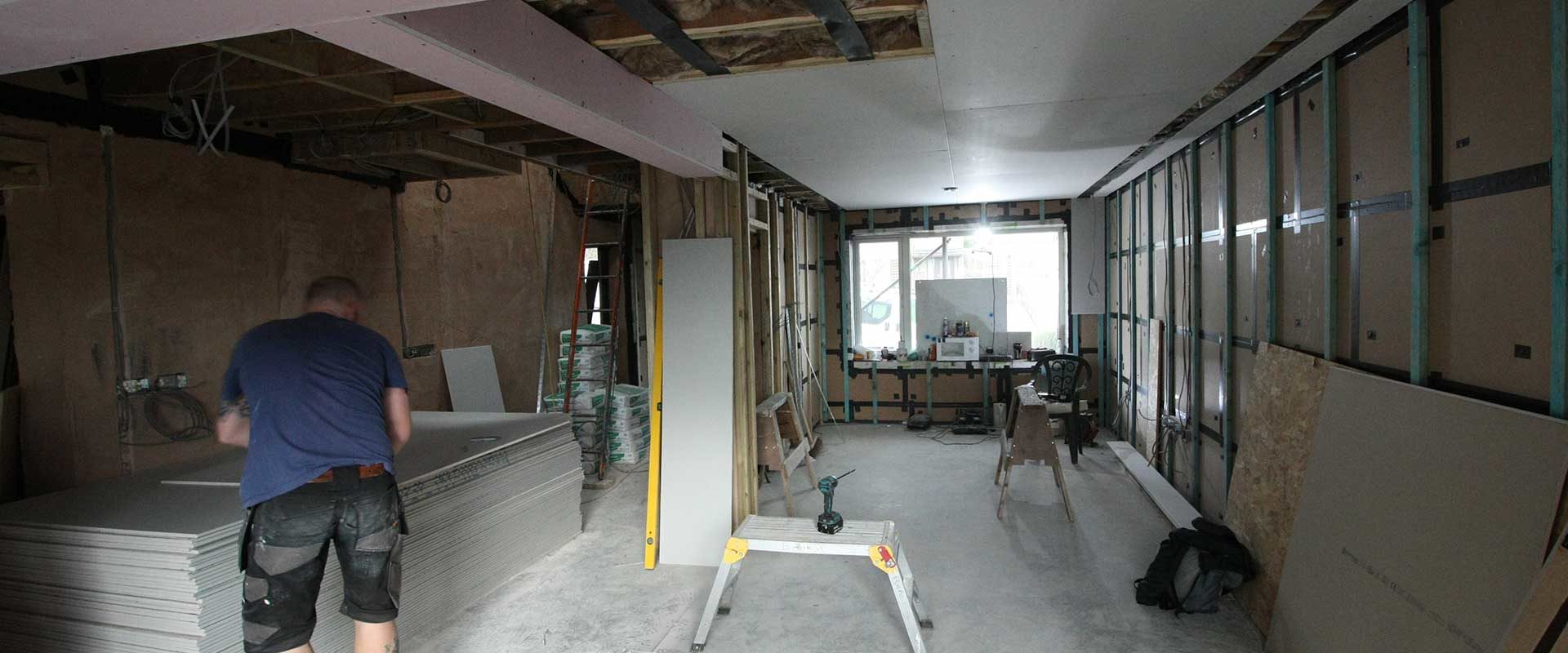There are various ways to heat your home throughout the year. If built correctly, a low-energy house or Passivhaus will be very well insulated and airtight.
It will require minimal heating which will affect your heating choices. You might aspire to have a woodburning stove at the start of your project but once you have the foundations of a well-insulated home that is already warm you might not need one!
Check out Paul’s retrofit project.
During the height of winter with a dusting of snow outside, his team have been working indoors in just their t-shirts!
Paul wrote a detailed, but rather technical, blog on this a few years ago and we thought it was time to revisit the subject in a more straight forward manner. To safely install a wood burner in your home you must provide a source of air to feed the burning of the wood. This is stipulated by building regulations and, if not considered early enough, might have a knock-on impact on the way your house performs. If you’re still keen to create a cosy ambience with a woodburning stove, here are some options:
Option 1
Install an airbrick in the external wall adjacent to the stove:
- This is the typical way combustion air might be provided in existing properties.
- It’s also cheap. However, it would be disastrous if you were aiming for an air-tight home as you’re just putting holes in the building fabric.
- There is no way you could achieve a stringent performance standard using this method.
Option 2
Install an external air supply stove:
- Many stoves now have an additional duct to the rear or the base of the stove that draws air in from outside.
- This is much better than option 1 as it is a more closed system. However, most of these stoves are still not airtight so air will still leak through the stove to outside.
Option 3
Install an air-tight stove:
- This is by far the best option and the only option if aiming for Passivhaus or Enerphit levels of air-tightness.
- There aren’t many models to choose from and they aren’t cheap.
- The RIKA Passivhaus stove is airtight and was installed at the Acomb project in York.
- The Morso S11 stove, used on an EcoArc Passivhaus project in Cumbria, is also suitably airtight, but only after adaptions to the airflow control.
Other things to consider
The other potential issue is with exhaust gases. These are very poisonous. A leaky house will likely be at a similar air pressure to outside so a leaky stove or an open stove door isn’t too big an issue. With an air-tight building, it’s entirely possible for the pressure to be different inside and out. This may mean that external air pressure pushes fumes into the room if the stove is leaky or the door is open. The two products listed above in Option 3 are designed to prevent gases from escaping into the room when the door is open. Many direct air-supply stoves won’t.

Do you need a woodburning stove?
There’s lots of debate about whether woodburning stoves should get the chop or not as part of the government’s claims to clean up our air quality. About 10% of UK homes (2.5 million) have an open fire or wood-burning stove. In certain cities, especially London, this is adding considerably to poor winter air quality.
If you have a well-insulated home we would question whether a stove is necessary (potentially overkill). We would also question whether burning timber is a truly sustainable source of heat. However, there is something very satisfying about burning stuff which most of us can’t quite resist.
Read our woodburning stove debate
As featured in Home Building and Renovating magazine.
Other options
If you have decided against installing a woodburning stove, but still long for some sort of a fire there are other options:
Fire pit or chimenea:
- You could install one of these in your garden.
- Still burning wood, you’re not damaging your air-tight envelope or causing internal air quality issues.
Alcohol gel stove:
- These are lower output so well suited to low energy homes.
- Their only exhaust is water vapour so much less harmful to air quality as well.
